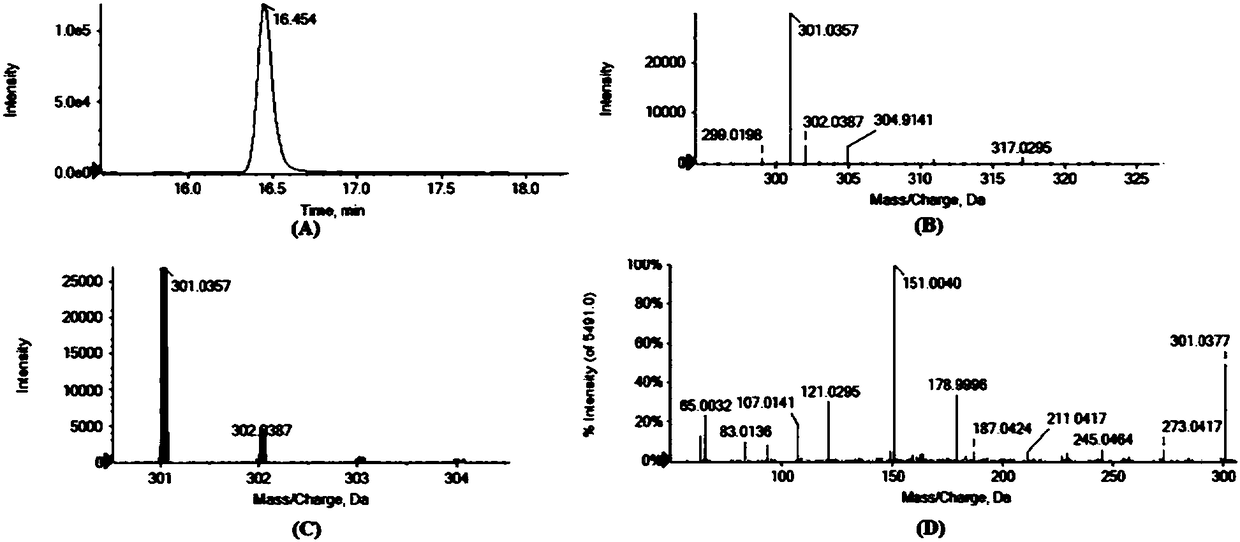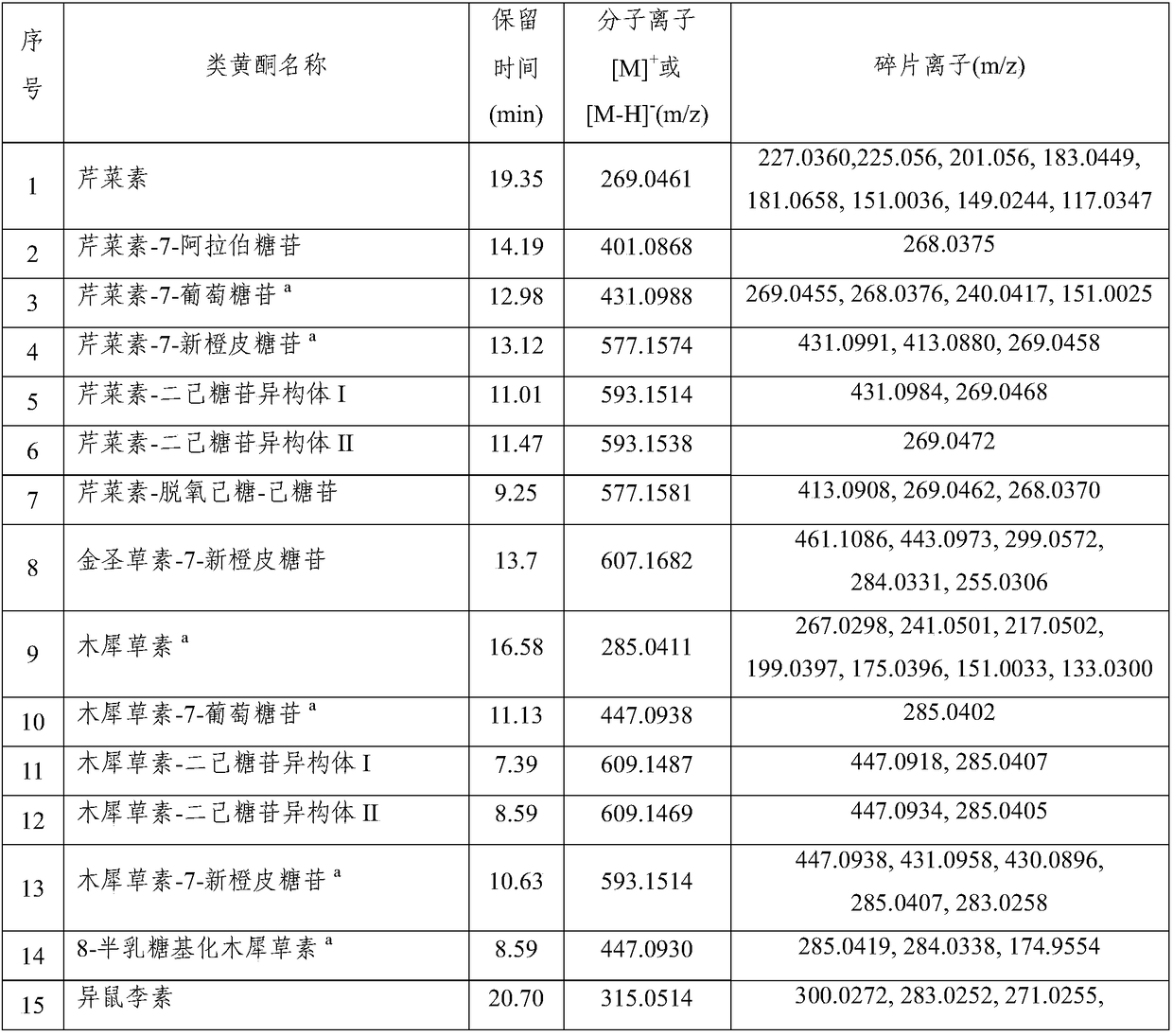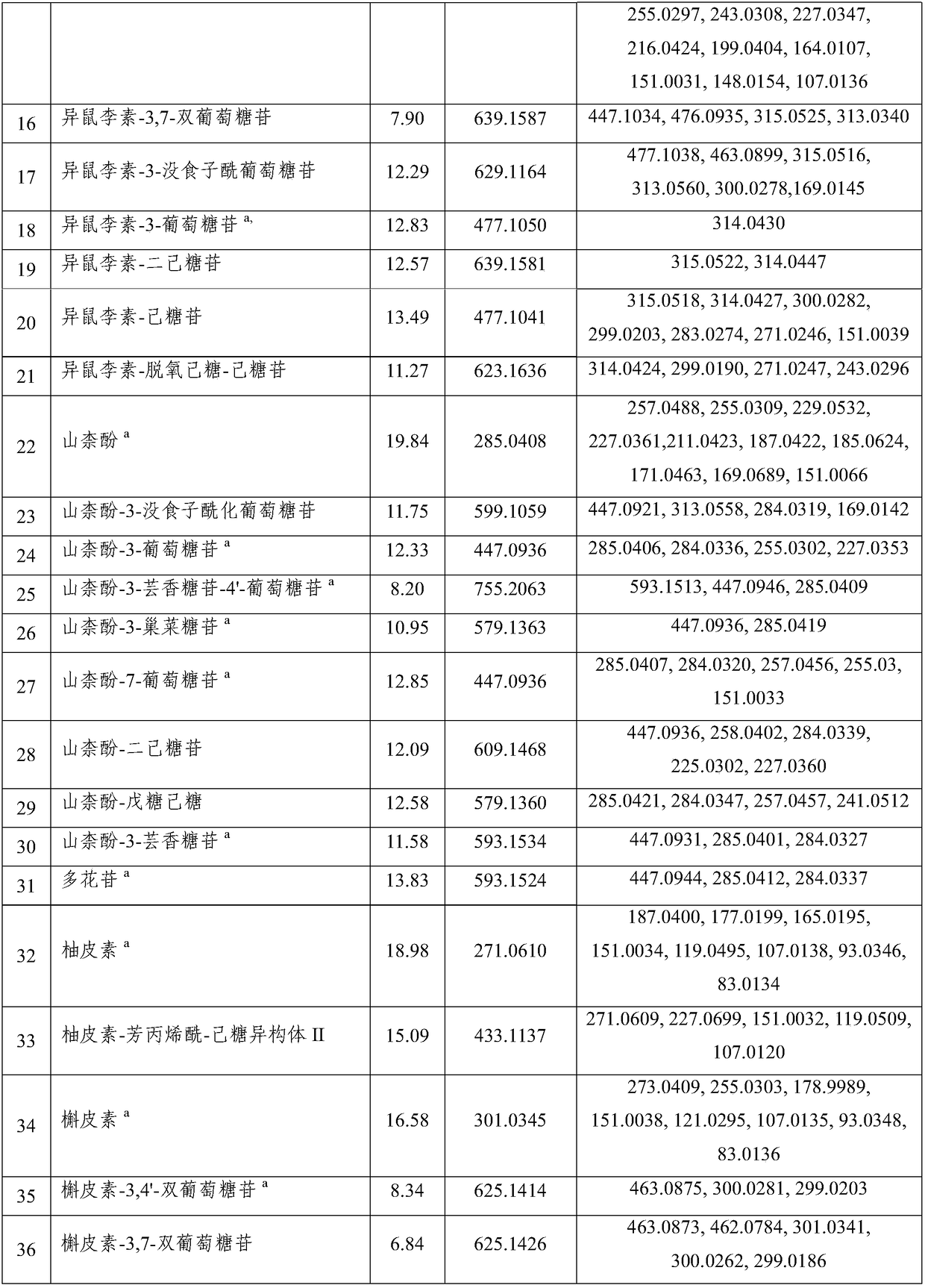Method for detecting flavonoid components in peony leaves
A technology of peony leaves and flavonoids, which is applied in the field of research on components of peony leaves, to achieve the effect of simple operation steps, rapid detection and high sensitivity
- Summary
- Abstract
- Description
- Claims
- Application Information
AI Technical Summary
Problems solved by technology
Method used
Image
Examples
preparation example Construction
[0028] (1) Preparation of flavonoid extract: Grind peony leaves into peony leaf powder under freezing conditions, mix the peony leaf powder with an alcohol solution to obtain a mixture containing peony leaves, and then process the mixture in sequence Ultrasonic treatment and centrifugal treatment, collecting the supernatant liquid and removing the precipitate, and then filtering the collected supernatant liquid through a filter membrane to remove solid impurities to obtain a flavonoid extract;
[0029] (2) The chromatographic conditions of the ultra-high performance liquid chromatograph, the mass spectrometry conditions of the triple quadrupole time-of-flight tandem mass spectrometer, and the setting of the detection wavelength of the diode array detector;
[0030] (3) Using ultra-high performance liquid chromatography-diode array detector-triple quadrupole time-of-flight tandem mass spectrometry technology to detect flavonoid extracts to obtain detection results; and
[0031] (4) Th...
Embodiment 1
[0049] Grind 13 fresh peony leaves into powder under liquid nitrogen and weigh 300mg, add 900μL of methanol solution containing 0.1% by volume formic acid and 80% concentration to extract the flavonoids from peony leaves, vortex for 1min to mix, ultrasonic Extract for 30 min, centrifuge at a high speed of 13000 r / min for 10 min, collect the supernatant and remove the precipitate, and then pass the supernatant through a 0.22 μm organic filter membrane to remove solid impurities to obtain a flavonoid extract. The obtained flavonoid extract was subjected to ultra-high performance liquid chromatography-diode array detector-triple quadrupole time-of-flight tandem mass spectrometry technology analysis. Among them, the chromatographic conditions, mass spectrometry conditions, and the detection wavelength range of the diode array detector are set as follows:
[0050] The chromatographic conditions are: mobile phase: solvent A is a mixed solution of acetonitrile and water containing 0.1% ...
Embodiment 2
[0063] Embodiment 2 is basically the same as embodiment 1, except that:
[0064] The chromatographic conditions are: mobile phase: solvent A is a mixed solution of acetonitrile and water containing 0.2% by volume formic acid, the volume ratio of water to acetonitrile is 90:10, and solvent B is an acetonitrile solution containing 0.2% by volume formic acid; the flow rate is 0.2mL / min; column temperature is 30℃; sample volume is 4μL; gradient elution conditions: 0~22min, 100% solvent A~72% solvent A, 0% solvent B~28% solvent B; 22~22.5min, 72% solvent A~60% solvent A, 28% solvent B~40% solvent B; 22.5~23min, 60% solvent A~0% solvent A, 40% solvent B~100% solvent B; 23~26.5min, 0 % Solvent A, 100% Solvent B; 26.5~27min, 0% Solvent A~100% Solvent A, 100% Solvent B~0% Solvent B; 27~32min, 100% Solvent A, 0% Solvent B, that is liquid The gradient elution conditions of the phase chromatography were set according to the program in Table 1.
[0065] A total of 29 major flavonoids were id...
PUM
| Property | Measurement | Unit |
|---|---|---|
| diameter | aaaaa | aaaaa |
| wavelength | aaaaa | aaaaa |
Abstract
Description
Claims
Application Information
 Login to View More
Login to View More - R&D
- Intellectual Property
- Life Sciences
- Materials
- Tech Scout
- Unparalleled Data Quality
- Higher Quality Content
- 60% Fewer Hallucinations
Browse by: Latest US Patents, China's latest patents, Technical Efficacy Thesaurus, Application Domain, Technology Topic, Popular Technical Reports.
© 2025 PatSnap. All rights reserved.Legal|Privacy policy|Modern Slavery Act Transparency Statement|Sitemap|About US| Contact US: help@patsnap.com



